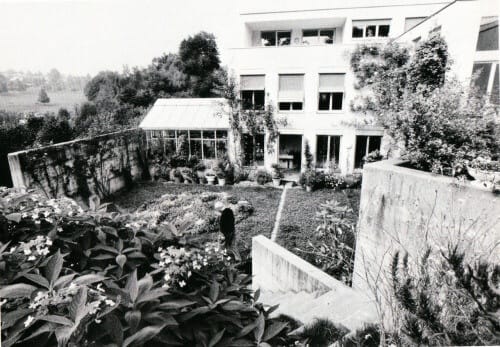Max Bill’s clarity of design had a profound influence on the architecture, painting, sculpture, typography, graphic and industrial design of the twentieth century. “Art has a unique opportunity to form a counterpoint to the technology-ridden, polluted and commercialized consumer civilization,” he said, in a 1972 interview.
Simple Design
Max Bill’s designs are thoughtful, simple and reflect the ideas of the Concrete Art Movement, which began in the 1930s, based on the idea that the work of art emanate from the mind of the artist, without sentiment, and appear more machine made than hand made. Much of the work that Bill and other concrete artists produced were based on mathematical concepts that focused on basic planes, forms and color. In 1944, Bill organized the first international exhibition of Concrete Art.
The designs were a far cry from the ornate Victorian Era and subsequent Deco design that prevailed at the turn of, and at the start of, the twentieth century. Bill’s minimalist designs were often ridiculed, although he eventually became the single most influential artist in Swiss graphic design by the mid-twentieth century.
The concept of Concrete Art applied not only to sculpture, but all design medium. Combillation, a four-panel geometric design, created by Bill in 1970, reflects his minimalist ideals, and is for sale at VFA.
Art has a unique opportunity to form a counterpoint to the technology-ridden, polluted and commercialized consumer civilization.”
The Watch
In 1961, Bill began an association with Junghans, the oldest watch and clock makers in Germany, established in 1861. The watch is simple and elegant in design. The numbers on the watch, liked the curved number four on the first models, reflect Bill’s gift for restraint in his typography. The Junghans company still makes Max Bill watches, with new editions that continue to reflect his Bauhaus sensibility that “form follows function.”
Complex Ideas
Max Bill was not just a creative artist, he was a political activist, as well. For fifty years he was secretly watched by the Swiss National Security. Their dossier on Bill dates back to 1936, when he had hidden a journalist who was being persecuted in Nazi Germany. He often gave sanctuary to both Jewish and political refugees, and was repeatedly, and heavily, fined for “not registering persons seeking shelter”.
After World War ll, Bill was assigned a key role in assisting the Allies in implementing the Marshall Plan for rebuilding Germany. Max Bill was the architect and first director of the Ulm School of Design in Germany in 1955. The school based its teaching on Bauhaus design and principles. It was closed in 1968 by a former Nazi judge, Hans Filbinger, who was then minister president of Baden-Württemberg.
In 1961, Bill was elected to the Zurich municipal council and was a Federal Parliament deputy from 1967 to 1971 as a member of the Independent Landesring Party. Throughout his lifetime, Bill continued to create works in the many fields in which he was so adept. He wrote about good design, saying that he hoped to design places and objects that would bring order to the world “from spoon to town”.
Max Bill at VFA
Please contact us for more information about Combillation or any of the works available for sale at VFA.



